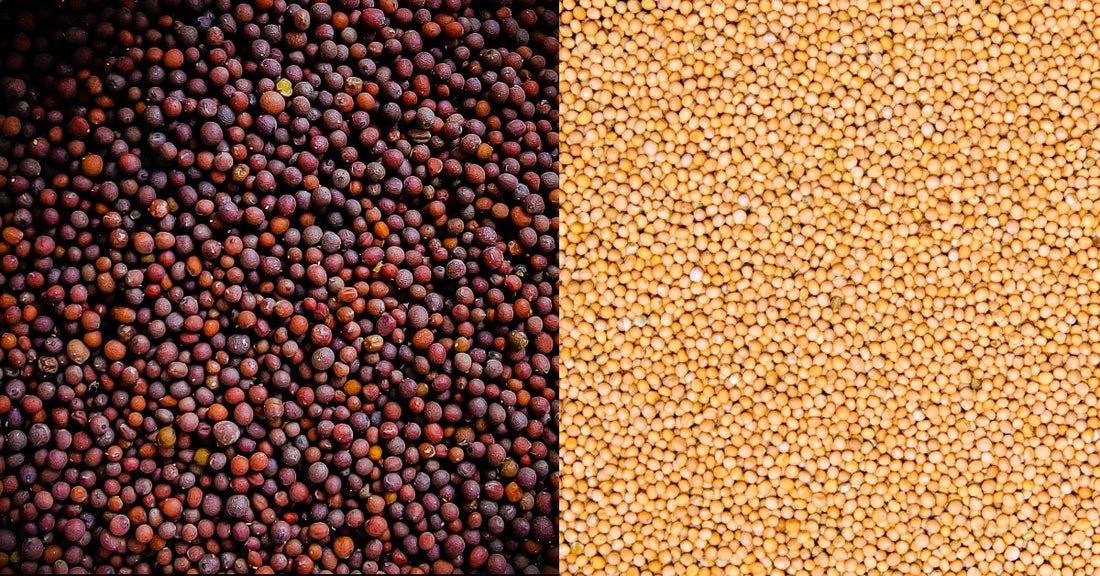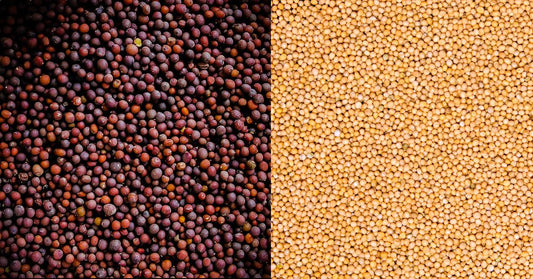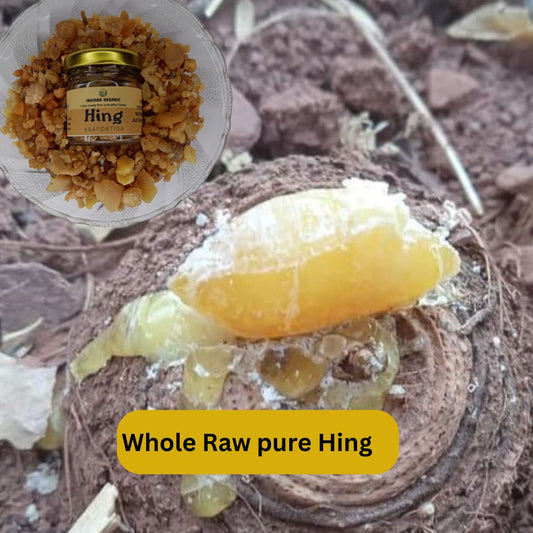Mustard seeds may offer numerous health benefits, including:
-
Potential reduction of inflammation
-
Potential alleviation of pain
-
Potential decrease in swelling
-
Potential anti-cancer properties
-
Potential protection against ulcers
-
Potential use as an antiseptic
-
Potential antibacterial effects
Packed full of vitamins and minerals
Mustard seeds come with a range of vitamins and minerals. Both yellow and black mustard seeds contain good amounts of a range of nutrients. These include:
- Vitamin A
- Vitamin B1
- Vitamin C
- Calcium
- Iron
- Selenium
- Phosphorous
- Manganese
- Magnesium
- Copper
Some amounts of these nutrients are relatively low, but the addition of any mineral into your diet is always beneficial.
How to Use Mustard Seeds for Health Benefits
- Add Whole Seeds to Salads: Sprinkle whole mustard seeds on salads for an added crunch and health boost.
- Incorporate into Pickles: Use mustard seeds as a key ingredient in pickling recipes to enhance flavor and preservation.
- Enhance Curries: Include mustard seeds in your curry recipes to add depth and a unique taste.
- Flavor Vegetable Dishes: Use mustard seeds to season and elevate the flavor of various vegetable dishes.
Conclusion
Yellow and black mustard seeds vary in color, size, and flavor. Yellow mustard seeds are lighter in color and have a milder taste, while black mustard seeds are darker, more pungent, and spicier.
Originating from the East Mediterranean, yellow mustard seeds are typically used in condiments and sauces. In contrast, black mustard seeds, which come from the Middle East, are used to impart aroma and heat to dishes.
Mustard seeds offer numerous health benefits. They are rich in nutrients, contain antioxidants, and possess anti-inflammatory properties, contributing to good cardiovascular health.
**You must consult your doctor before taking mustard seeds in large quantities or any herbal supplements. Likewise, consult a qualified doctor before discontinuing or replacing an ongoing modern medical treatment with an ayurvedic | herbal preparation.
Frequently Asked Questions About Mustard Seeds
1. Can I substitute yellow mustard seeds for black?
Yellow mustard seeds are significantly milder than black mustard seeds, so if substituting, you'll need to use a larger quantity of yellow seeds to achieve a similar flavor. Despite belonging to the same plant family, yellow and black mustard seeds come from different plants, resulting in distinct flavor differences. Yellow seeds are the mildest, while black seeds are the most pungent.
2. Can you substitute yellow mustard seeds for black mustard seeds? Yes, you can substitute yellow mustard seeds for black mustard seeds, but you'll need to use a larger quantity. This is because yellow seeds are much milder in flavor compared to black seeds.





